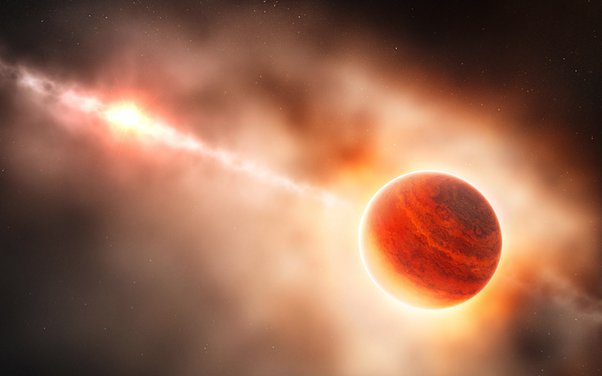
320 light years away is a star called HD 100546.
In 2014, the discovery of a new exoplanet around it was announced. Creatively, it was named “HD 100546 b”.
Calculated to have the mass of anywhere between 60-752 Jupiters ( 752 as quoted by NASA), as well as a diameter of 613,000 miles (986,527.8 km), this planet flirts with the boundaries of physics. If it were any more massive, there would not be much to stop it from becoming a Brown Dwarf, a type of cool, dim star.
To put the size into perspective, consider this:
The fastest manned space craft ever was Apollo 10, reaching a peak speed of 24,791 mph (39,897.2471 kph).
Now, let’s imagine we can somehow hold this speed.
To travel merely the diameter of HD 100546 b, it would take Apollo 10 a just over a full day. If that doesn’t sound like a lot, hold on.
If we were to skim the tops of its clouds, tracing an exact orbit around its circumference at this mind numbing speed, it would take us 3.25 days.
To complete the same trek around earth, Apollo 10 would take only take an hour.






